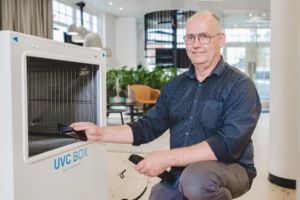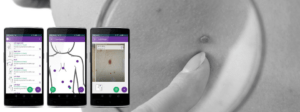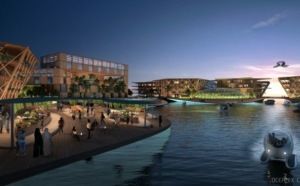It would be natural to expect our top science stories to be filled with COVID-related discoveries, but that would be overlooking what a big year Denmark has had in the fields of research, discovering and all-out bravado.
The hurricane that was the coronavirus might have done its best to disrupt the sector, but Denmark has nobly kept its course in its pursuit of sustainability and innovative solutions.
Not the worst of years
From grand international projects to smaller solutions, the year has brought breakthroughs in all fields. In fact, it’s no exaggeration to say the sector didn’t want the year to end. After all, with no face-to-face commitments to honour, it’s been heads down in the laboratory all year!
The picks below showcase the top ten moments.
10: The obligatory COVID breakthrough
Esko Design, a small company from Herfølge has developed a UVC light box that can remove the coronavirus from surfaces within two minutes. The small, automated box can be used to disinfect tools in hospitals, nursing homes and even restaurants. The production of the machine is currently underway, and the orders are slowly rolling out as several public institutions have expressed an interest.
9: Mini brain developed
Scientists at the University of Copenhagen have developed a brain that replicates one that a foetus of four to seven months might have. They have succeeded in mimicking the brain by placing a human brain tissue into a small incubator, and they are hopeful it can help them find a treatment for Alzheimer’s and Parkinson’s.
8: Skin scan solution
Miiskin has built an app that lets people scan their skin irregularities. It hopes the app can spot changes to the skin that are not visible, providing an early detection for skin diseases such as cancer.
7: Predicting heart attacks
Vital Beats has developed an app that can predict a heart attack for those who have a pacemaker. The app can detect abnormalities 30 days before the attack might happen.
6: No humans needed at testing centre
The Technical University of Denmark has unveiled its new automated and intelligent test centre. A one of a kind in Europe, the 1,1000sqm Center for Collaborative Autonomous Systems can adapt to the environment and perform complex tasks independently of human interference.
5: An ultrasound to measure arthritis
Researchers at the University of Southern Denmark have developed the ROPCA Ultrasound (RU) to measure the amount of arthritis in a patient’s hand. The automatised ultrasound was developed with the hope it could reduce the costs of the screenings and to make it more available to the public. They are hoping to bring it to the market in two years.
4: Pig blood into protein
University of Copenhagen researchers have pioneered a method to transform pig blood into a neutral-tasting protein powder, which they hope could revolutionise the food industry and its CO2 emission rates. They also found this powder has a higher nutritional value than any other plant or dairy-based protein currently available. In Denmark, 60,000 tonnes of pig blood are left unused by the production of pork annually.
3: Camel milk solution
In collaboration with other universities the Technical University of Denmark has discovered a novel way to ferment camel milk, a common cause of food poisoning in Africa. The researchers found a new strain of lactic acid bacteria that can both acidify the milk and kill off disease-causing micro-organisms. African researchers estimate that food poisoning kills 137,000 people on the continent annually.
2: BIG’s floating city
Bjarke Ingels was part of the team who designed Oceanix City, the first floating sustainable city, which can host up to 10,000 residents. It will be powered by renewable energy and can survive a category-five hurricane. The city complex is expected to provide residence to those who are unable to live elsewhere due to rising sea levels.
1: Seawater heating
Aarhus Docklands rolled out a new ambitious project that aims to use seawater to heat 12,000 homes in the area. The electric pumps extract heat from the water and also function as a vacuum to collect waste. The aim of the project is to ensure that the whole municipality is CO2-neutral by 2030.


















